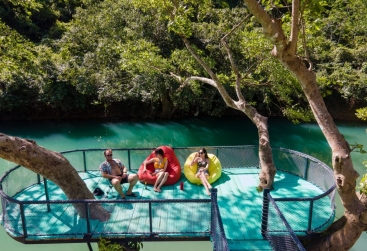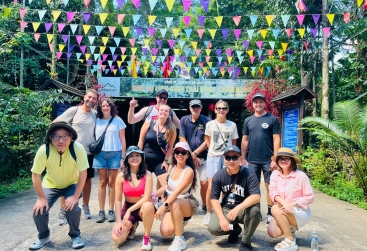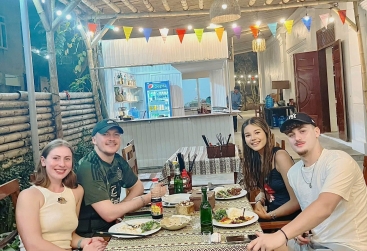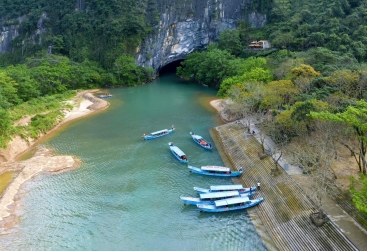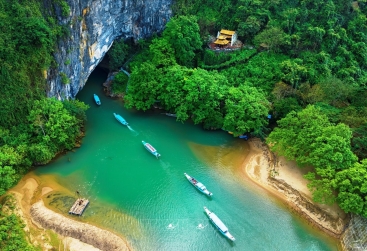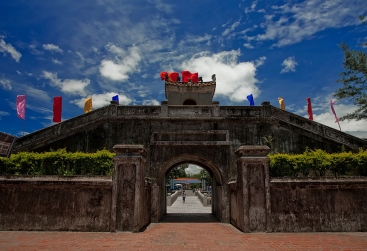Tran Thang, Chairman of Quang Binh People’s Committee, has said that identifying the potential and penning out the development for tourism in the province is necessary but requires a helping hand from diverse areas, including the government, as well as domestic and foreign investors.
Thang noted that scenic spots such as magnificent caves and long sandy beaches would be meaningless if there were no connections and attached infrastructure.
The key factor is to attract guests to stay in the province, and make visitors return many times over, bringing the image of a beautiful and friendly locality to countries around the world.
Nguyen Van Tuan, former general director of the Vietnam National Administration of Tourism, said that for the sector’s sustainable development, Quang Binh needs to draw investors who have the heart, vision, and a long-term outlook. The locality also needs to nurture and form products with high experiential value, associated with world-class, high-quality ecotourism brands.
“It is necessary to mobilize small and medium-sized enterprises to participate in the formation of supply chains of tourism products, as well as the participation of the community. The community should be deemed an investor, making an important contribution to the formation of indigenous products,” Tuan said.
“Tourism is an integrated field, and to turn Quang Binh into an attractive destination, it needs the help of businesses in many categories, including services, accommodation facilities, entertainment areas, night economy services, high-value tourism products and more,” he added.
World-class complexes
Quang Binh has a strategic direction, especially regarding tourism infrastructure and creation of high-value products.
In light of the province’s tourism and land allocation plan, Quang Binh is set to maintain two existing golf courses in Quang Ninh district and Dong Hoi city, simultaneously proposing two more golf courses in Bo Trach district and Quang Ninh district. By 2030, the province will have four golf courses.
According to the master planning, Quang Binh identifies the coastal route as one of three important economic corridors to build the marine economy. The coastal route is under construction, entailing a potential investment pivot to marine tourism infrastructure, such as hotels, high-class resorts, and coastal urban areas.
The most typical funding in the coastal tourism segment can be found at the Regal Ocean International Complex urban area project of Dat Xanh Mien Trung JSC. This world-class urban area complex spans 21 hectares with a variety of real estate types.
The development features five towers with nearly 40 floors, fully designed commercial centres, international 5-star hotels, and apartments. The low-rise area has a row of houses, shophouses, townhouse units, villas, a lakeside 5-star service area, a night walking street, and more.
Tran Dinh Thien, former director of Vietnam Institute of Economics, said that Quang Binh had immense potential and advantages, yet better conditions were required to promote the tourism sector’s growth.
“Connecting tourism here with regional and national tourism will resonate, helping Quang Binh to flourish,” Thien said.
Marco Breu, managing partner at McKinsey & Company Vietnam, said that Quang Binh had a favourable position with numerous tourism resources, especially the UNESCO World Heritage Site, the long coastline, and Dong Hoi Airport, which created strengths for its tourism to set a revenue target reaching $1 billion by 2030, welcoming approximately 10 million visitors per year.
Breu suggested Quang Binh calls for investment in eco-resorts, beach resorts, marine adventure activities, new healthcare services, and nursing centres.
Brand positioning
Ho An Phong, Deputy Chairman of Quang Binh People’s Committee, said that the province would focus on making tourism a spearhead economic sector and promote socioeconomic development in association with community interests and sustainability.
“Its tourism distinction rests on bountiful natural attractions such as its unique cave system, cultural and historical values, sports tourism, and high-class resorts,” Phong said.
Nguyen Ngoc Quy, director of Quang Binh Department of Tourism, said that the master plan for the next decade was set to utilise four main clusters.
Cluster A encompasses Phong Nha-Ke Bang National Park. Quang Binh wants to develop this area into a national and international tourist centre with a seamless and modern infrastructure system, as well as diversified and high-quality products. Phong Nha-Ke Bang has many mysterious caves, such as Son Doong, En, and the Vom system.
Cluster B covers Dong Hoi and the surrounding sea tourism areas. With this cluster, Quang Binh prioritises supporting new high-class resorts along the sea, including high-value facilities such as golf courses and villas. In addition, it aims to create Nhat Le riverside products, entertainment services in Dong Hoi, and community-based resorts.
Quang Binh’s southern part forms cluster C, which is set to be a complex of cultural, historical and resort, encompassing spiritual infrastructure such as Non Pagoda, Than Dinh Mountain, Hoang Phuc Pagoda, a memorial house for General Vo Nguyen Giap, Nguyen Huu Canh Tomb, and traditional boat racing festival on the Kien Giang River.
Cluster D is located north of Quang Binh, home to the General Vo Nguyen Giap grave site, Hoang Son Quan, Holy Mother Temple, Canh Duong Cultural Village, Ba Don Market, and But Waterfall.








